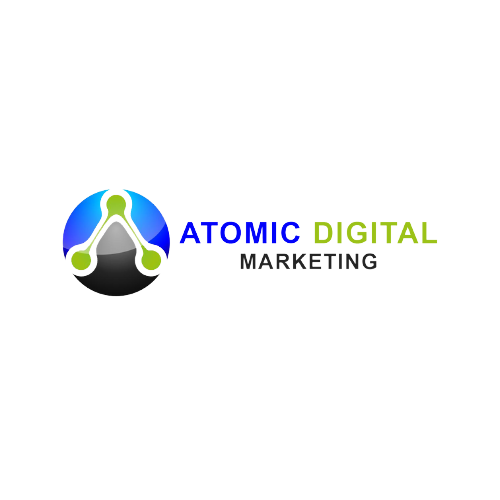Atomic Digital Marketing’s Precision Propels Powerful Results
In the constantly evolving world of digital marketing, precision has become the key to success. Traditional broad-stroke marketing strategies no longer yield the high returns they once did. Enter atomic digital marketing, a revolutionary approach that focuses on meticulous targeting and precision in delivering marketing messages. This strategy leverages cutting-edge technology and data analysis to ensure that every marketing effort is tailored to its audience with pinpoint accuracy, maximising impact and driving superior results.
Understanding Atomic Digital Marketing
Atomic digital marketing is a term that encapsulates a highly granular and data-driven approach to digital marketing. It involves breaking down marketing campaigns into the smallest possible units—hence the term “atomic”—and optimising each unit individually. This micro-level focus allows marketers to tailor their strategies and content to specific audience segments, ensuring higher relevance and engagement.
Key Components of Atomic Digital Marketing
- Data-Driven Decision Making: At the heart of atomic digital marketing is the reliance on data. By collecting and analysing vast amounts of data on consumer behaviour, preferences, and demographics, marketers can create highly personalised campaigns. This data-driven approach helps in understanding what works and what doesn’t, allowing for continuous optimisation.
- Targeted Content: Content is crafted to appeal to narrowly defined audience segments. Instead of one-size-fits-all messages, atomic marketing delivers custom content that speaks directly to the needs, interests, and pain points of each segment. This increases the likelihood of engagement and conversion.
- Multichannel Integration: Atomic digital marketing is not confined to a single platform or channel. It integrates various digital channels—social media, email, search engines, and more—to create a cohesive and consistent user experience. Each channel is optimised to perform its best while contributing to the overall marketing strategy.
- Automation and AI: Automation tools and artificial intelligence (AI) play crucial roles in atomic digital marketing. They help in efficiently managing and analysing data, personalising content at scale, and automating repetitive tasks. AI-driven insights allow marketers to predict trends and behaviours, making proactive adjustments to their strategies.
- Continuous Optimisation: Unlike traditional campaigns that might run for a set period, atomic digital marketing involves continuous monitoring and optimization. By regularly reviewing performance metrics, marketers can tweak and refine their approaches to improve results continually.
The Benefits of Atomic Digital Marketing
Enhanced Precision – The most significant advantage of atomic digital marketing is its precision. By targeting specific segments with tailored messages, marketers can achieve higher engagement rates. This precision reduces waste in marketing spend, as resources are allocated only to strategies that have a high probability of success.
Higher ROI – With increased precision comes a higher return on investment (ROI). Since atomic digital marketing targets consumers more effectively, the conversion rates are typically higher. This means that every dollar spent on marketing yields more significant returns, making the overall campaign more cost-effective.
Improved Customer Experience – Personalization is a critical component of a positive customer experience. Atomic digital marketing ensures that customers receive content and offers that are relevant to them, which enhances their overall experience with the brand. Happy customers are more likely to become loyal patrons and advocates.
Scalability – Atomic digital marketing strategies are inherently scalable. As more data is collected and analysed, campaigns can be refined and scaled to reach larger audiences without losing their precision. Automation tools and AI further facilitate this scalability, enabling marketers to manage extensive campaigns with relative ease.
Real-Time Adjustments – The dynamic nature of atomic digital marketing allows for real-time adjustments based on performance data. This agility means that marketers can quickly respond to changes in consumer behaviour, market conditions, or competitive actions, keeping their campaigns relevant and effective.
Implementing Atomic Digital Marketing
- Step 1: Data Collection and Analysis – The foundation of atomic digital marketing is data. Start by collecting data from various sources—website analytics, social media insights, customer feedback, and more. Use advanced analytics tools to interpret this data, identifying patterns and trends that can inform your marketing strategies.
- Step 2: Audience Segmentation – Segment your audience based on the data collected. Create detailed profiles for each segment, including demographics, interests, behaviours, and purchasing patterns. This segmentation will help you craft personalised messages that resonate with each group.
- Step 3: Personalised Content Creation – Develop content that is tailored to each audience segment. This might involve creating multiple versions of a single message, each designed to appeal to a different segment. Ensure that the content addresses the specific needs and preferences of each group, increasing its relevance and impact.
- Step 4: Multichannel Strategy Development – Integrate your marketing efforts across multiple channels. Develop a cohesive strategy that ensures consistent messaging and branding across all touchpoints. Use the strengths of each channel to enhance your overall campaign—social media for engagement, email for personalised communication, and search engines for visibility.
- Step 5: Automation and AI Integration – Utilise automation tools to streamline your campaigns. Automate repetitive tasks such as email marketing, social media posting, and data analysis. Implement AI-driven tools to gain deeper insights into consumer behaviour and to personalise content at scale. AI can also help predict trends, allowing you to stay ahead of the competition.
- Step 6: Continuous Monitoring and Optimisation – Regularly review the performance of your campaigns using key metrics such as engagement rates, conversion rates, and ROI. Use this data to make informed adjustments to your strategies. Continuously optimise your campaigns to ensure they remain effective and relevant.
Case Studies: Success Stories in Atomic Digital Marketing
- Case Study 1: A Retail Giant’s Personalised Email Campaign – A leading retail brand implemented an atomic digital marketing strategy by personalising their email campaigns. They segmented their audience based on purchase history, browsing behaviour, and demographic data. Each segment received tailored product recommendations and exclusive offers. This approach led to a 30% increase in email open rates and a 20% boost in sales.
- Case Study 2: A Tech Company’s Multichannel Campaign – A tech company utilised atomic digital marketing to launch a new product. They integrated their efforts across social media, email, and search engines. By using data-driven insights, they tailored their messages to different audience segments, emphasising features that resonated most with each group. The campaign resulted in a 50% increase in website traffic and a 35% rise in conversions.
- Case Study 3: A Financial Service Firm’s AI-Driven Insights – A financial service firm leveraged AI to analyse customer data and predict future needs. They used these insights to create highly personalised content, such as investment advice and product recommendations. The AI-driven approach allowed them to anticipate customer needs accurately, leading to a 25% increase in customer retention and a 15% growth in new accounts.
The Future of Atomic Digital Marketing
As technology continues to advance, the capabilities of atomic digital marketing will only expand. Emerging technologies such as augmented reality (AR), virtual reality (VR), and the Internet of Things (IoT) will provide even more data and opportunities for personalisation. Additionally, the increasing focus on consumer privacy will shape how data is collected and used, requiring marketers to balance personalisation with ethical considerations.
Ethical Considerations
With great power comes great responsibility. As marketers gain more data and the ability to target consumers with unprecedented precision, it is crucial to handle this power ethically. Respecting consumer privacy, being transparent about data usage, and providing value through marketing efforts are essential practices in maintaining trust and integrity.
Embracing Innovation
Marketers must stay abreast of technological advancements and be willing to adapt. Embracing new tools and techniques will allow them to refine their strategies continually and maintain a competitive edge. Investing in ongoing education and training for marketing teams is essential in this fast-paced environment.
Atomic digital marketing represents the pinnacle of precision in the marketing world. By leveraging data, targeting specific audience segments, and utilising advanced technology, marketers can achieve unparalleled results. The benefits—enhanced precision, higher ROI, improved customer experience, scalability, and real-time adjustments—make this approach indispensable in today’s digital landscape. As the field continues to evolve, those who embrace the power of precision will undoubtedly drive superior results and set new standards in digital marketing.
From Engagement to Conversion: Maximising Impact in Social Media Management
Related Posts
Categories
- Animals (1)
- Artificial intelligence (AI) (2)
- Blog (51)
- Client Links (11)
- Dental Marketing (1)
- Design (5)
- Digital Marketing (50)
- Media (7)
- Music (1)
- News (20)
- SEO Case Studies (13)
- SEO Company Sydney (10)
- SEO Posts (25)
- SEO Sydney (23)
- SEO Testimonials (5)
- Social Media Australia (10)
- Social Media Management (11)
- Social Media Managers (2)
- Social Media Sydney (10)
- Social Media Training (2)
- Travel (4)
- Uncategorized (3)




